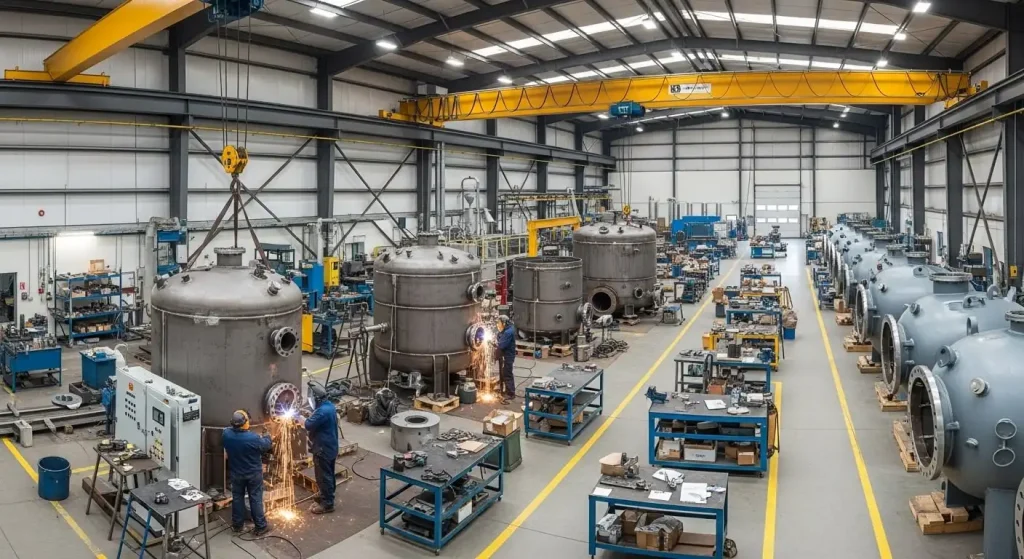
## Shipping and Offloading Pumps: A Guide to Safe and Efficient Handling
Pumps are the lifeblood of countless industries, from agriculture and construction to oil and gas and wastewater treatment. Their reliable operation hinges not only on their design and performance but also on the care taken during shipping and offloading. Improper handling can lead to damage, reduced lifespan, and costly downtime. This article provides a comprehensive guide to safely and efficiently shipping and offloading pumps, ensuring they arrive at their destination ready for optimal performance.
**I. Pre-Shipping Considerations: Preparation is Key**
Before a pump even leaves the warehouse, careful preparation is essential:
* **Review the Manufacturer’s Instructions:** The manufacturer’s manual is the ultimate authority on handling procedures. Pay close attention to specific recommendations regarding lifting points, securing methods, and environmental considerations.
* **Proper Packaging:** Pumps should be securely packaged to withstand the rigors of transportation.
* **Crating:** For larger, heavier pumps, sturdy wooden crates are often necessary. Ensure the crate is appropriately sized and constructed to prevent movement and protect the pump from impacts.
* **Skidding:** Smaller pumps can be securely mounted to skids for easier forklift handling.
* **Padding and Bracing:** Use ample padding materials like foam, bubble wrap, or wood blocks to cushion the pump and prevent shifting within the packaging.
* **Weatherproofing:** Consider weatherproofing the packaging, especially for long-distance or overseas shipments, to protect against moisture and corrosion.
* **Documentation:** Include all relevant documentation, such as:
* **Packing List:** A detailed list of all components included in the shipment.
* **Manufacturer’s Manual:** A copy of the pump’s operational and maintenance manual.
* **Warranty Information:** Documentation outlining the warranty terms.
* **Shipping Manifest:** The official shipping document containing tracking information and details about the shipment.
* **Labeling:** Clearly label the packaging with:
* **Fragile Handling Instructions:** Prominent “Fragile” stickers to alert handlers to exercise caution.
* **Weight and Dimensions:** Accurate weight and dimension information to ensure proper lifting equipment is used.
* **Destination Address:** Clearly marked destination address for accurate delivery.
* **Hazardous Materials Information (if applicable):** If the pump contains or utilizes hazardous materials (e.g., oil), ensure proper labeling and compliance with all applicable regulations.
**II. During Shipping: Minimizing Risks**
Once the pump is packaged, selecting the right shipping method and carrier is crucial:
* **Choose a Reputable Carrier:** Research and select a carrier with experience in handling heavy and sensitive equipment. Check their safety record and insurance coverage.
* **Communicate Handling Requirements:** Clearly communicate any specific handling requirements to the carrier, such as the need for specialized lifting equipment or temperature control.
* **Secure the Load:** Ensure the pump is securely strapped or chained to the transport vehicle to prevent movement during transit.
* **Track the Shipment:** Utilize tracking services to monitor the shipment’s progress and anticipate its arrival.
**III. Offloading Procedures: A Step-by-Step Guide**
Offloading is a critical stage where damage is most likely to occur. Follow these steps carefully:
* **Planning and Preparation:**
* **Inspect the Delivery Area:** Ensure the offloading area is clear of obstructions and has adequate space for maneuvering equipment.
* **Gather Necessary Equipment:** Have the appropriate lifting equipment (forklift, crane, etc.), rigging hardware, and safety gear readily available.
* **Review Documentation:** Re-familiarize yourself with the manufacturer’s instructions and the packing list.
* **Inspection Upon Arrival:**
* **Thoroughly Inspect the Packaging:** Before signing for the shipment, carefully inspect the packaging for any signs of damage, such as dents, punctures, or broken seals.
* **Document Any Damage:** If damage is present, document it thoroughly with photographs and a written description on the delivery receipt. Notify the carrier immediately.
* **Safe Offloading:**
* **Use Proper Lifting Techniques:** Always use the designated lifting points specified by the manufacturer.
* **Ensure Secure Rigging:** Use appropriate rigging hardware (slings, chains, shackles) that are rated for the weight of the pump.
* **Lift Slowly and Steadily:** Avoid sudden movements or jerking motions during lifting.
* **Maintain a Safe Distance:** Keep personnel clear of the lifting area during the offloading process.
* **Lower the Pump Gently:** Lower the pump to the ground slowly and carefully, avoiding any impacts.
* **Post-Offloading Inspection:**
* **Remove Packaging Carefully:** Carefully remove the packaging materials, inspecting the pump for any hidden damage.
* **Detailed Inspection:** Conduct a detailed inspection of the pump, checking for any signs of damage, such as dents, scratches, or loose components.
* **Verify Contents:** Compare the contents of the shipment with the packing list to ensure everything is accounted for.
* **Report Any Discrepancies:** Report any discrepancies or damage to the manufacturer and the carrier immediately.
**IV. Long-Term Storage:**
If the pump is not immediately installed, proper storage is crucial:
* **Clean and Dry:** Clean the pump thoroughly and ensure it is completely dry before storing.
* **Protect from the Elements:** Store the pump in a clean, dry, and well-ventilated area, protected from direct sunlight, rain, and extreme temperatures.
* **Apply Corrosion Inhibitors:** Apply a corrosion inhibitor to prevent rust and corrosion, especially on exposed metal surfaces.
* **Regular Inspection:** Periodically inspect the pump during storage to ensure it remains in good condition.
**Conclusion:**
Shipping and offloading pumps requires careful planning, attention to detail, and adherence to best practices. By following the guidelines outlined in this article, you can minimize the risk of damage, ensure the pump arrives at its destination in optimal condition, and maximize its lifespan and performance. Remember, investing in proper handling procedures is an investment in the long-term reliability of your pumping systems.